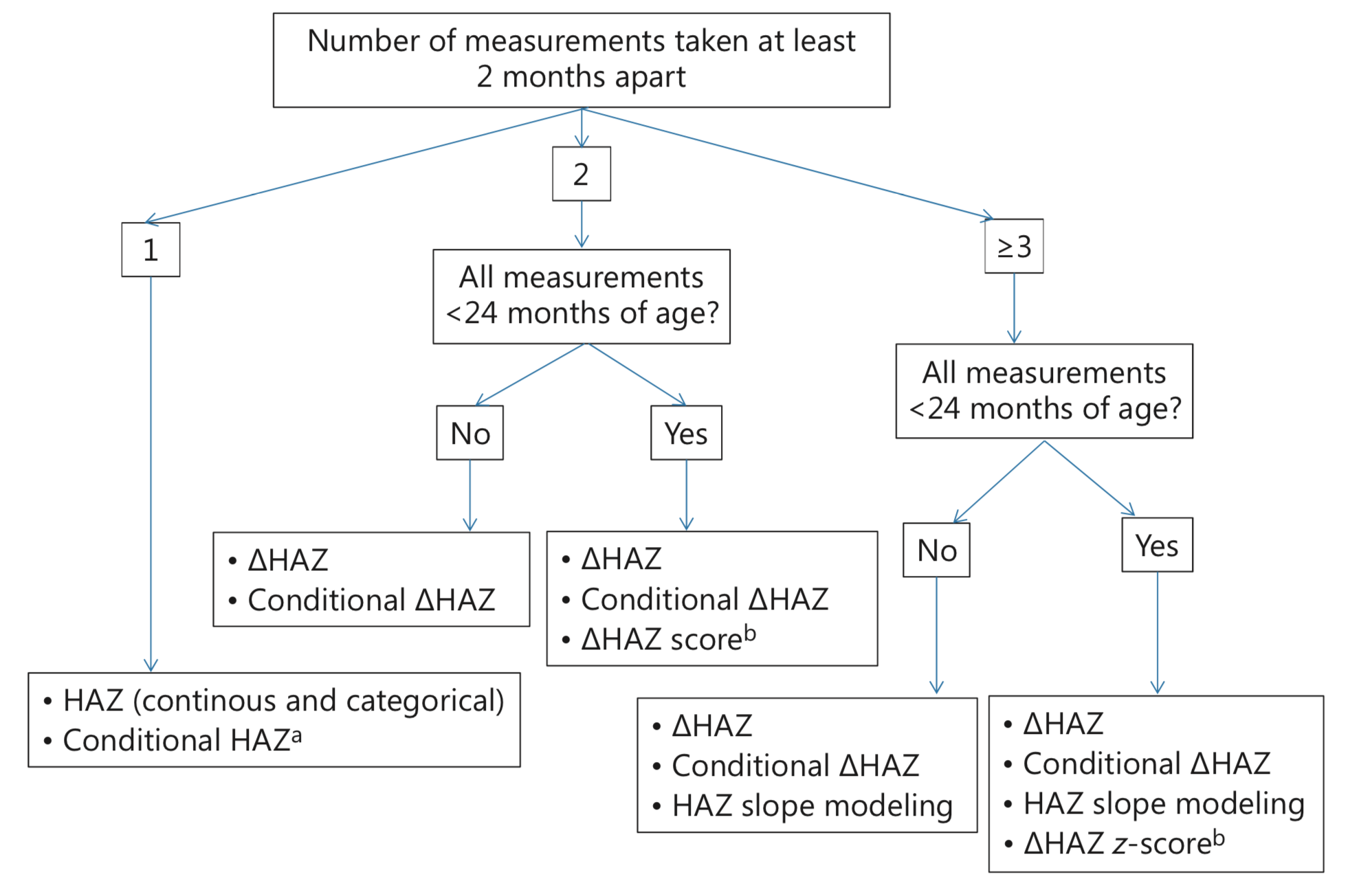
Practical application of linear growth measurements in clinical research in low-and middle-income countries
Abstract
Background/Aims: Childhood stunting is a prevalent problem in low- and middle-income countries and is associated with long-term adverse neurodevelopment and health outcomes. In this review, we define indicators of growth, discuss key challenges in their analysis and application, and offer suggestions for indicator selection in clinical research contexts. Methods: Critical review of the literature. Results: Linear growth is commonly expressed as length-for-age or height-for-age z-score (HAZ) in comparison to normative growth standards. Conditional HAZ corrects for regression to the mean where growth changes relate to previous status. In longitudinal studies, growth can be expressed as ΔHAZ at 2 time points. Multilevel modeling is preferable when more measurements per individual child are available over time. Height velocity z-score reference standards are available for children under the age of 2 years. Adjusting for covariates or confounders (e.g., birth weight, gestational age, sex, parental height, maternal education, socioeconomic status) is recommended in growth analyses. Conclusion: The most suitable indicator(s) for linear growth can be selected based on the number of available measurements per child and the child’s age. By following a step-by-step algorithm, growth analyses can be precisely and accurately performed to allow for improved comparability within and between studies.